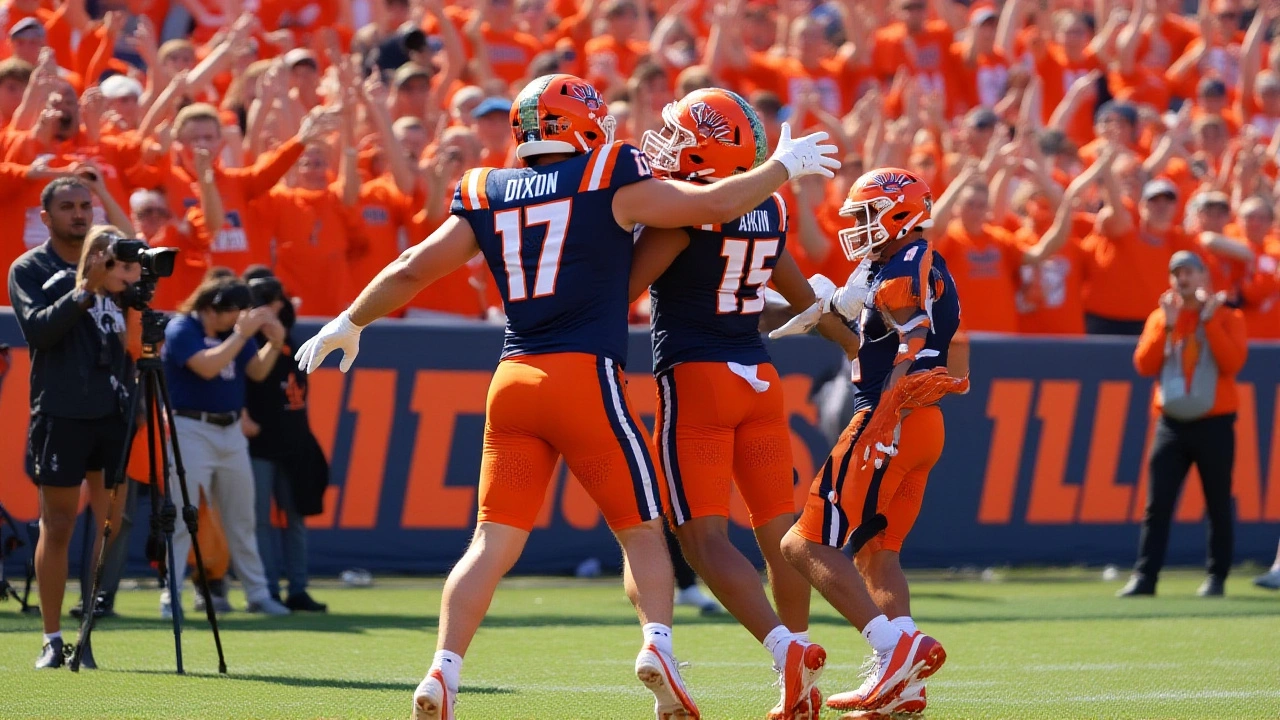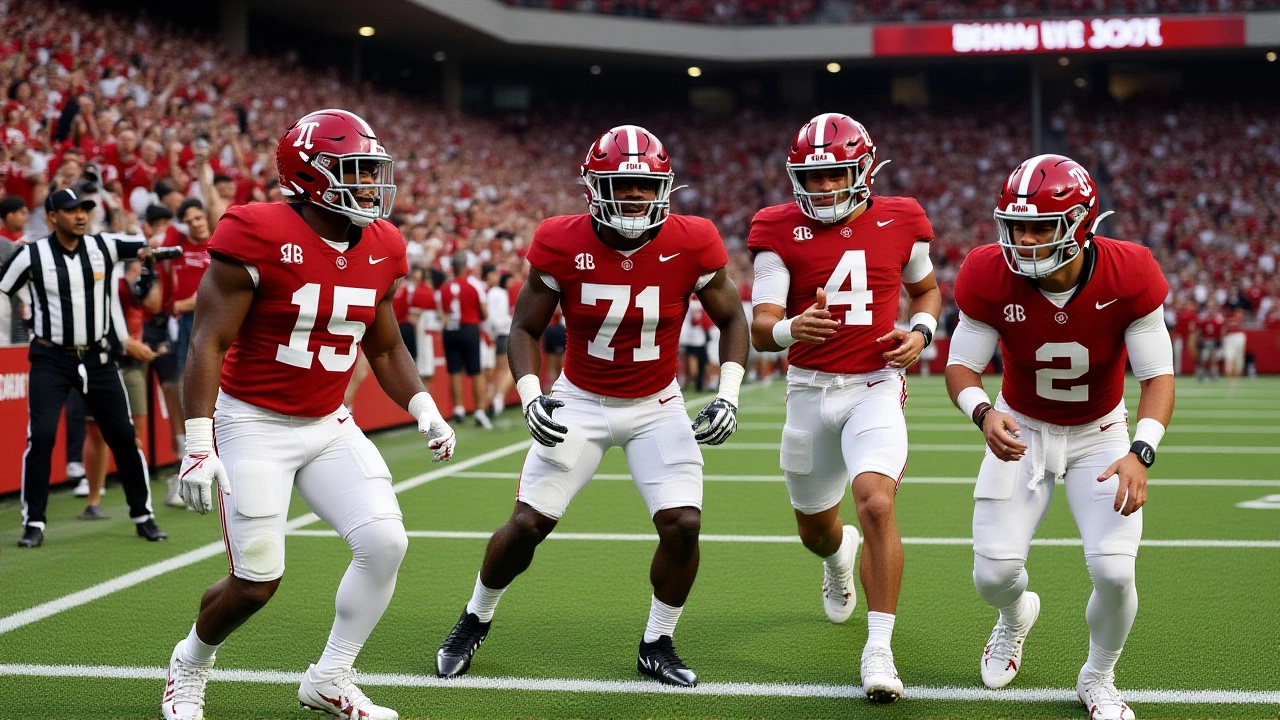On Tuesday night, the third College Football Playoff rankings dropped with a thud for Michigan fans: the University of Michigan Wolverines remained stuck at No. 18, despite an 8-2 record and a commanding 6-1 mark in the Big Ten Conference. It wasn’t a surprise — not really — but it was a gut punch. The Wolverines, who play their home games at Michigan Stadium in Ann Arbor, are now staring down a playoff path that looks more like a dead end than a highway. Only the top four teams make the College Football Playoff. Michigan is 14 spots away. And time is running out.
What’s Keeping Michigan Out?
The College Football Playoff selection committee, based in Atlanta, Georgia, didn’t just ignore Michigan’s wins — they seemed to shrug them off. The Wolverines beat ranked teams like Iowa and Penn State earlier this season, but losses to Alabama and Wisconsin still haunt their résumé. Meanwhile, teams like Oregon, Texas, and Tennessee all picked up big wins, while Michigan’s schedule strength dipped after their Week 10 stumble. The committee values wins, sure — but they value wins against the right teams, and at the right time. Michigan’s late-season wins didn’t carry the weight they needed.“It’s not about how many you win,” said one anonymous committee member quoted by College Football News in their Wednesday analysis. “It’s about who you beat, when you beat them, and how convincingly.” Michigan beat Maryland by 10, Wisconsin by 3. They lost to Alabama by 17. That’s the math the committee is using.
The Road to the Top Four
To even dream of making the playoff, Michigan must win out. That means beating University of Maryland Terrapins on November 23 in Ann Arbor — a game they’re favored to win — and then pulling off the impossible: defeating the Ohio State University Buckeyes on November 30 in Columbus, Ohio. Ohio State, currently ranked No. 1, is a powerhouse. The Wolverines haven’t beaten them in Columbus since 2021. And even if they do, it’s not enough.They need chaos. At least two of the current top-seven teams — Ohio State Buckeyes, Georgia Bulldogs, Oregon Ducks, Texas Longhorns, Alabama Crimson Tide, Penn State Nittany Lions, or Tennessee Volunteers — must lose before the final rankings on December 7. That’s a tall order. Georgia and Oregon haven’t lost all season. Texas has a brutal schedule ahead, but they’re playing like a title contender. The odds? Slim. But not zero.

Media, Money, and the Michigan Mindset
The Detroit News called it “a sobering reality check.” Maizen Brew, the Michigan-focused outlet under SB Nation, ran a piece titled “Examining Michigan Football’s Path to the Playoff” — a title that now reads like an obituary. The article noted that Michigan needs to jump to at least No. 5 by the final ranking to have a realistic shot. That’s a 13-spot climb in less than two weeks. No team has ever done that in the CFP era.The financial stakes? Massive. A team in the playoff earns roughly $6 million in direct revenue from the CFP’s $651 million distribution pool. Miss it, and Michigan’s athletic department loses out on that — plus bowl payouts that could add another $2–3 million. For a program that spends $80 million annually on football, that’s not just a loss. It’s a setback.
And then there’s the emotional toll. Michigan fans have tasted playoff contention twice in the last four years — runner-up in 2021, semifinalist in 2023. Now, they’re watching the door slam shut again. The noise in Ann Arbor isn’t angry. It’s quiet. Disappointed. The kind of silence that follows a season that had promise but fell short.
What Happens Next?
The next rankings drop on Tuesday, November 25, 2025, at 7:00 PM Eastern Time. That’s the final snapshot before the championship selections on December 7. If Michigan beats Maryland and Ohio State, and two top-five teams collapse — say, Oregon loses to Oregon State, and Texas falls to TCU — then the Wolverines might creep into the top 10. But top four? That’s a miracle.Meanwhile, the bottom of the rankings tells its own story. The Arizona State Sun Devils at No. 25, Tulane Green Wave at No. 24, and Houston Cougars at No. 23 — all with better records than Michigan — are ranked higher because of strength of schedule and conference prestige. The Big Ten’s reputation isn’t what it used to be. And Michigan’s late-season losses are being punished for it.

Historical Context: The CFP Era and Michigan’s Near Misses
Since the College Football Playoff began in 2014, Michigan has never cracked the top four in its first season under Jim Harbaugh — until now. In 2021, they were No. 2, lost to Alabama in the semifinal. In 2023, they were No. 3, lost to Georgia. Both times, they were one win away from the title game. This year? They’re not even in the conversation. The gap between “contender” and “also-ran” has never felt wider.What’s different this time? Depth. The Big Ten is deeper than ever — but Michigan’s non-conference losses to Alabama and Wisconsin have exposed a lack of elite wins. They’ve played hard. They’ve played smart. But they haven’t played well enough against the very best. That’s the CFP’s cruel calculus.
Frequently Asked Questions
Can Michigan still make the College Football Playoff?
Technically, yes — but it’s a 1-in-50 shot. Michigan must win both remaining games and hope for at least two upsets among the top seven teams. Even then, they’d need to jump 13 spots in one week. No team has ever done that in the CFP era. The odds are stacked against them, but college football thrives on chaos. A single loss by Oregon or Texas could change everything.
Why is Michigan ranked below teams with worse records?
The CFP committee prioritizes strength of schedule and quality wins over win-loss totals. Teams like Houston (No. 23) and Tulane (No. 24) have stronger non-conference schedules and beat higher-ranked opponents earlier in the season. Michigan’s losses to Alabama and Wisconsin hurt more than their wins over mid-tier teams. The committee values consistency against elite competition — and Michigan hasn’t delivered enough of that.
What’s at stake financially if Michigan misses the playoff?
Missing the playoff could cost Michigan’s athletic department $6–9 million in direct revenue. The CFP distributes $651 million annually, with each participating team earning roughly $6 million. Bowl payouts, sponsorships, and merchandise sales tied to playoff contention could add another $2–3 million. For a program that budgets $80 million for football, that’s a major hit — and it impacts recruiting and facility funding for years.
When is the next ranking release, and how important is it?
The next rankings come out on Tuesday, November 25, 2025, at 7:00 PM Eastern Time. This is the final ranking before the playoff selections on December 7. It’s the last chance for Michigan to prove they belong. If they beat Ohio State and the top teams stumble, they could jump into the top 10. But to crack the top four, they’d need a perfect storm — and even then, it’s unlikely.
How does this compare to Michigan’s past playoff appearances?
In 2021, Michigan was No. 2 and lost in the semifinal. In 2023, they were No. 3 and lost to Georgia. Both times, they had multiple top-10 wins and a clean record. This year, they have two losses to top-10 teams and no wins over current top-10 opponents. The résumé is weaker, the momentum is gone, and the committee sees it. This isn’t just a setback — it’s a step backward from where they were just two years ago.
What does this mean for Jim Harbaugh’s future at Michigan?
Harbaugh’s job security isn’t in immediate danger — he’s still the program’s most successful coach since Lloyd Carr. But missing the playoff for the third time in four years, especially after two deep runs, will fuel growing criticism. Fans expect championships. Without a playoff appearance this season, pressure will mount for a stronger non-conference schedule and more aggressive recruiting. The next two years will define whether Harbaugh can elevate Michigan back to elite status.



